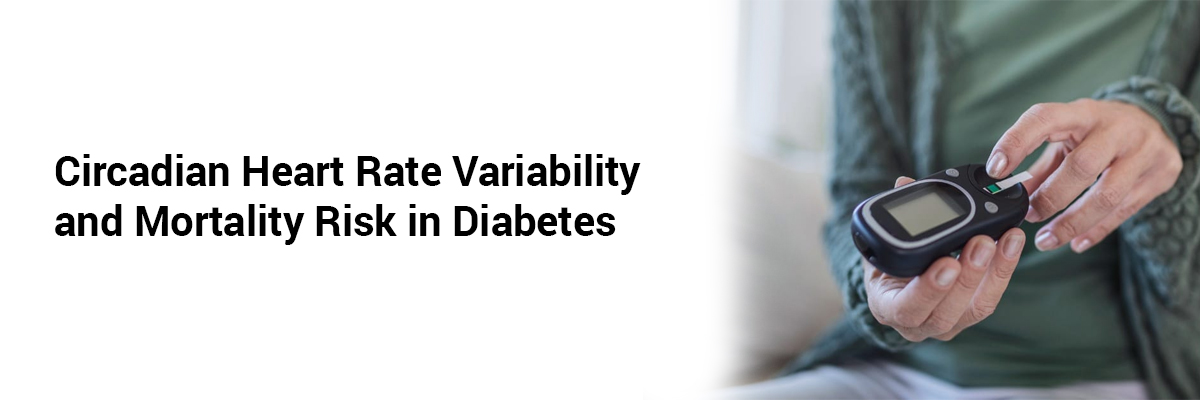
Circadian Heart Rate Variability and Mortality Risk in Diabetes
Impaired fluctuations in the daily heart rate are common in patients with long-standing diabetes and are linked to microvascular complications, as well as higher long-term cardiovascular and all-cause mortality. These findings from an Italian study with a 21-year follow-up were presented at the 60th Edition of the European Association for the Study of Diabetes (EASD) 2024 Annual Meeting in Madrid, Spain.1
This study aimed to evaluate the prognostic significance of disruptions in circadian heart rate (HR) variability in predicting cardiovascular and all-cause mortality among 349 patients with diabetes, both type 1 or type 2, over a period of 21 years. The enrolled participants were subjected to 24-hour ambulatory blood pressure and heart rate monitoring (ABPM). Majority (81%) had type 2 diabetes. The mean age of the cohort was 57 years and the mean BMI and HbA1c were 29.4 kg/m2 and 8.6%, respectively. “The median standard deviation (SD) value of ABPM-derived HR measurements was used to define patients with low daily HR fluctuations (low 24h-HR SD); less than 10% decline in average night-time vs day-time HR was used to identify patients with blunted nocturnal HR dip (n=107, 31%).”
The study found that a low daily variations in the heart rate and a reduced night time dipping of heart rate were linked to a higher prevalence of adverse cardiometabolic risk profile, along with a high prevalence of cardiac autonomic neuropathy and nephropathy.
A total of 136 (39%) deaths were recorded after follow-up of 21 years; of these, 100 (68%) were attributed to cardiovascular causes.
The risk of death due to cardiovascular causes was nearly doubled among those with low 24h-HR SD group with hazard ratio (HR) of 1.99 versus those experiencing high daily HR fluctuations.
These findings persisted even after controlling for potential confounders such as age, sex, BMI, glycemic control, type of diabetes and uncontrolled hypertension. The risk of all-cause mortality was increased by 50% with HR of 1.50. Compared to participants with preserved nocturnal HR dip, those who showed a blunted nocturnal dip in HR were at a 39% higher adjusted risk for cardiovascular and all-cause mortality with HRs of 1.61.
The participants were also examined for diabetes-related microvascular complications, which revealed that disrupted HR variations were associated with a higher burden of multiorgan damage.
Based on these findings, the study concluded that detecting impaired circadian heart rate fluctuations through 24-hour ABPM therefore may be a cost-effective tool for risk stratification in this high-risk group of patients with type 2 and type 1 diabetes. Because of the retrospective and observational nature of the study, these findings do not establish causality; nevertheless, it may help identify patients at higher risk of premature death.
Reference
1. L Nesti, et al. Abstract 983. Circadian heart rate fluctuations predict 21-year cardiovascular and all-cause mortality in type 2 and type 1 diabetes. EASD 2024. Dated Sept. 10, 2024. Accessed on Sept. 13, 2024.













Please login to comment on this article